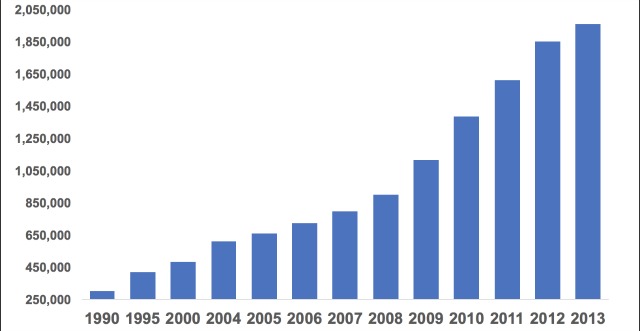The fastest growing race distance in the country is the half marathon with an annual growth rate in half marathon finishers of 12.5% since 2003 (per Running USA).

With nearly 2 million finishers per year, it’s no surprise that runners are hoping to accomplish the sub-2 finish time.
But running a half marathon in less than two hours isn’t easy. It requires averaging 9:09 per mile for nearly two hours of continuous running while navigating the course, terrain, water stops, bathroom breaks, and hundreds or even thousands of other runners.
For those who crave a challenge, breaking 2:00:00 in the half is a worthy goal. With the right training adjustments and preparation, most runners have the physical tools to make it happen.
You just need to put in the work.
Half Marathon Training Principle #1: Endurance
The first piece of fitness that must be developed is general endurance – or the ability to run for a long period of time.
Many beginner runners are hampered by low levels of endurance; therefore, the biggest gains in fitness come from building endurance (not from fast workouts!).
So, how do you increase your endurance? Most runners simply need to run more miles. This comes in three important forms:
First is running frequency – or the number of times you run per week.
For ambitious half marathoners choosing to run under two hours, at least four days of running is recommended. This will help improve your overall running economy and make running higher mileage easier.
Next is your weekly mileage (or volume).
If you’re running at least four days per week, your volume should be over 20 miles per week, but preferably over 30 miles. The increase in overall workload causes physical adaptations that make your body capable of running faster over longer distance. This is why elite runners run over 100 miles per week – it’s quite simply the best way to gain endurance.
Your long run is the final piece of the endurance puzzle.
To run 13.1 miles at a faster pace, it’s important to first be able to cover the distance at a comfortable pace. Many half marathoners try to cover 10 miles during training so they’re confident they can run 13.1 miles on race day.
But you’re not trying to run 13.1 miles – you’re trying to race the distance. Just like you have to crawl before you can walk, you have to first run the half easy before you run it fast.
Your weekly long run must therefore peak at about 15-18 miles or else the distance itself will remain challenging.
This video will help you think more strategically about planning your long runs during half marathon training:
And you don’t want the distance to be challenging; you want the pace to be challenging!
Half Marathon Training Principle #2: Train Faster to Race Faster
Sounds simple, doesn’t it? But too many runners never run any fast workouts and therefore are incapable of running fast on race day.
Instead, performing a weekly fast workout will make your sub-2 half easier to accomplish. Focus on the bread and butter half marathon workouts like tempo runs and fartlek workouts.
A Tempo is done at a pace that’s “comfortably hard” or what you could hold for about an hour (for highly trained runners). For runners targeting a sub-2 half marathon, this will likely be a pace in between your 10k and current half marathon pace.
Start by running this pace for 2-3 miles and build to about 4-5 miles. After about two months of tempo runs, you can transition to about a month of faster, fartlek workouts.
Fartleks (Swedish for “speed play”) are time-based workouts that you can run anywhere. A simple example is 6 repetitions of 2-minute intervals run at your 10k Pace. After each repetition, you take an equal 2-minute easy jog to recover.
Vary the pace of your fartlek runs to run faster than tempo pace – 10k and 5k Pace are great options. After you’ve done slower tempo runs, fartleks build on that fitness and help sharpen your speed so you can run faster on race day.
Successful Half Marathon Training
These strategies form the foundation of successful training for the half marathon:
- Run more days per week so you can boost your weekly mileage
- Include a weekly long run that exceeds the race distance
- Run workouts that focus on paces faster than your half marathon goal pace
Combine these strategies and it’s only a matter of time before you run your own sub-2 half marathon.
And if you’re excited about even more half marathon challenges, make sure you know how to recover from them:
Need some help? Our coaching programs have helped many runners just like you accomplish the sub-2:00 goal!